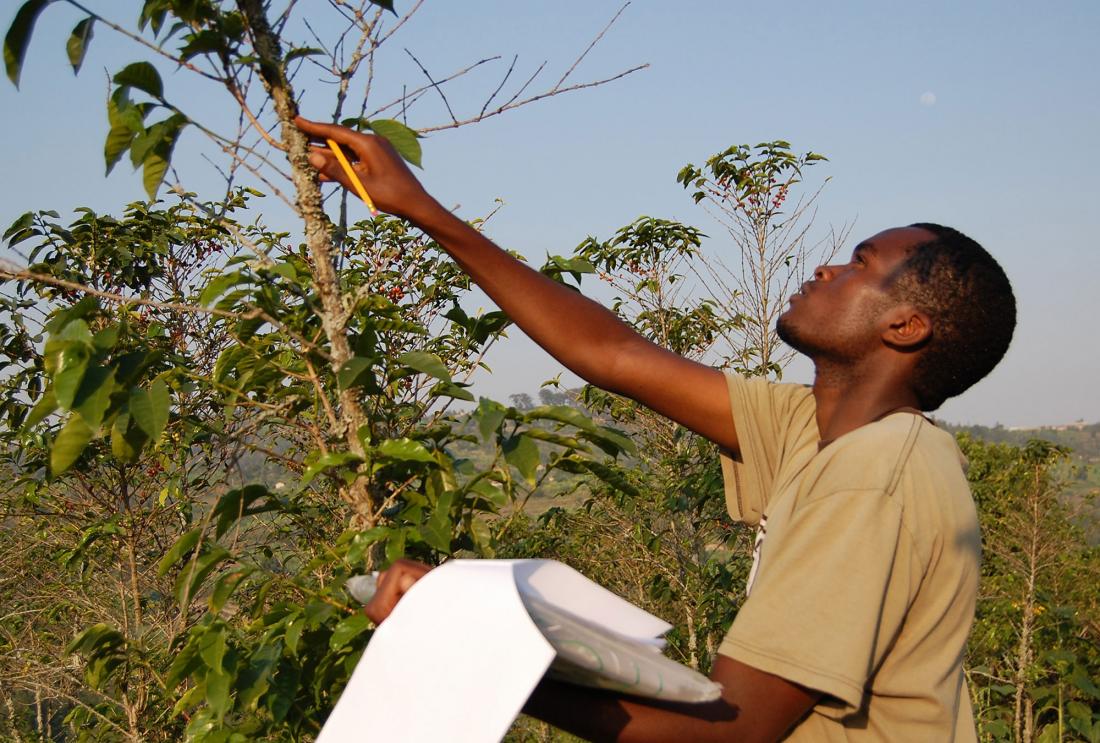Promoting Agricultural Technology Adoption in Rwanda
- Farmers
- Rural population
- Technology adoption
- Training
Policy issue
In Sub-Saharan Africa, a significant proportion of the poor are small-scale farmers with productivity levels among the lowest in the world. Agronomic practices, such as the correct combination of organic and inorganic fertilizer or pruning of tree crops, have the potential to substantially increase yields. However, application of such practices, and adoption of productivity-enhancing agricultural technologies in general, remain infrequent in most of Sub-Saharan Africa. Assuming that knowledge deficits are the main hindrance to the adoption of best agronomic practices, training on agricultural technologies could promote the take-up of these practices, increase productivity, and improve economic outcomes for these poor farmers. This project aims to evaluate the impact of agronomy trainings on small-holder productivity and adoption of best agronomic practices. The study will also measure the diffusion of the program’s effects, if any, within farmers' social networks, by linking each grower to the people with whom they might share the information provided in the trainings.
Context of the evaluation
According to the Ministry of Agriculture of Rwanda, the main reason why the country is currently falling short of the coffee sector targets for 2010 is an insufficient level of cherry production . In Rwanda, one of the most densely populated countries in Sub-Saharan Africa, land parcels are extremely small – averaging only a few acres. Most farmers live off subsistence agriculture, and therefore usually give priority to food crops, allocating only a small fraction of their land to coffee. Since their revenues from coffee sales are limited by production levels, finding ways to improve their yields could make coffee a more attractive crop choice and help small-scale farmers shift out of subsistence farming into more profitable activities.
TechnoServe, an agri-business NGO aiming to provide business solutions to those in rural areas, is conducting agronomy trainings in several coffee-growing regions in Rwanda and other East African countries. IPA is conducting a randomized evaluation of one of TechnoServe’s agronomy training programs in Nyarubaka, a rural sector (a geographical unit covering thirty villages) in the Southern Province of Rwanda. Similar to other coffee farming regions in Rwanda, the majority of farmers in Nyarubaka live off the food crops they grow, and few households have electricity.

Details of the intervention
In Nyarubaka, the agronomy training evaluation sample is composed of the 1600 farmers (from 27 villages) who signed up for Technoserve’s agronomy trainings. As Technoserve only had resources to train a limited number of farmers, households in the sector were randomly assigned to a treatment (50%) or comparison (50%) group after receiving a baseline survey. The baseline survey collected crop production and profit information (across all crops), information on consumption, household demographics and assets, and a detailed social network map (including information on who farmers talk to about coffee).
Villages in the treatment group were then randomly assigned to different intensity levels: in some villages 25% of registered households received treatment (i.e. 75% comparison), others 50%, and others 75%. Training sessions took place once a month for 11 months in the first year of the program and an additional 5 review training sessions were done over the course of the second year. These trainings covered a number of coffee best practices: rejuvenation and pruning; nutrition (organic and inorganic); pest, disease and weed management; mulching; soil and water conservation (water traps, terracing); shading; and record keeping. Trainings were attended by groups of around 30 farmers and took place on the plot of a designated "focal farmer" who was generally chosen because of the accessibility of his/her plot.
Farmers in the sample receive surveys every few months to gather data on their coffee yields, sales and practices, as well as their harvests of other crops during the two rainy seasons. In addition, there is a consumption survey administered once a year. Take-up of the agronomy practices taught in the trainings is monitored closely through bi-yearly plot inspections. Farmers in both treatment and comparison groups were given scales for weighing their coffee harvests and calendars to record their harvests and sales.
All the coffee farmers in the sector who are not part of the direct agronomy training evaluation are also surveyed at least once a year to collect data on their own coffee practices. Annual follow-up of these additional 1400 coffee farmers in the region allow us to identify their “coffee friends” (individuals who they talk to about coffee) to assess the diffusion of these practices through the social networks of trained farmers. This context is a particularly interesting one to learn about diffusion, as there is variation in the type of technologies included in farmer training. Some of the best practices result in outcomes that are visibly evident (i.e. coffee trees just look much better/healthier) whereas others are less visible. So, we may see differences in the relative speeds of diffusion of these various practices (with some diffusion even outside the social networks, but within geographical space).
Both geographic and social network mapping of all coffee farmers in Nyarubaka is carried out regularly to understand how geographic and social infrastructures affect adoption and diffusion of the agronomic practices.
Results and policy lessons
Results forthcoming.
